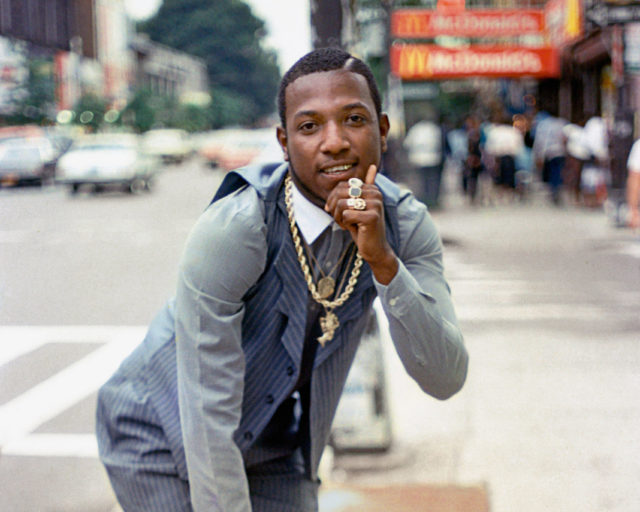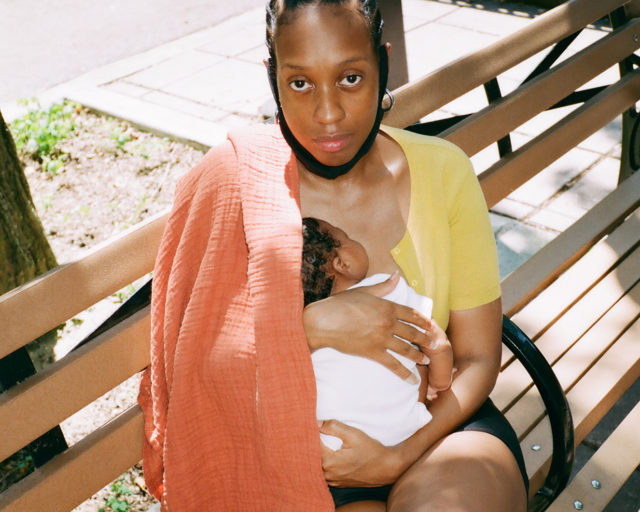How a Collective of Photographers Aims to Affirm Black Life
During the racial justice protests of 2020, See In Black presented visions of Black America through their own lived experiences—and raised critical funds for homelessness, youth, queer, and political organizations.
Flo Ngala, Untitled, Brooklyn Bridge, NY, 2020
At the height of the racial justice protests in the wake of George Floyd’s, Breonna Taylor’s, and Tony McDade’s deaths by law enforcement in 2020, a group of six young Black photographers organized themselves into the collective See In Black. Spearheaded by the New York–based image makers Micaiah Carter and Joshua Kissi, the mission was simple: use art to affirm that Black life, disproportionately affected by the coronavirus and state-sanctioned violence, matters beyond moments of crisis.
“See In Black formed as a collective of Black photographers to dismantle white supremacy and systemic oppression,” the coalition’s statement of solidarity reads. “Our intention is to replenish those we’ve been nourished by.” Their first action was to establish a print sale titled Vol. 001 Black In America, which included snapshots, street scenes, self-portraits, still lifes, and editorial images of Blackness by nearly eighty photographers. Collectively, these intimate portrayals present community as an act of hope. Image by image, you see Black America honestly gazed at from within the circle of lived experience. At a time of deep despair, their photographs were a testament that Black narratives will not be devalued. The print sale raised over $500,000, which they donated to five homelessness, youth, queer, political, and legal organizations.
A number of the photographers call New York home. The city, battered badly over the past year, has allowed these artists to establish themselves creatively and to attune their eyes to construct counternarratives that squarely capture what the collective calls “Black prosperity.” Here, I speak with seven of the photographers about how art meets activism in New York.
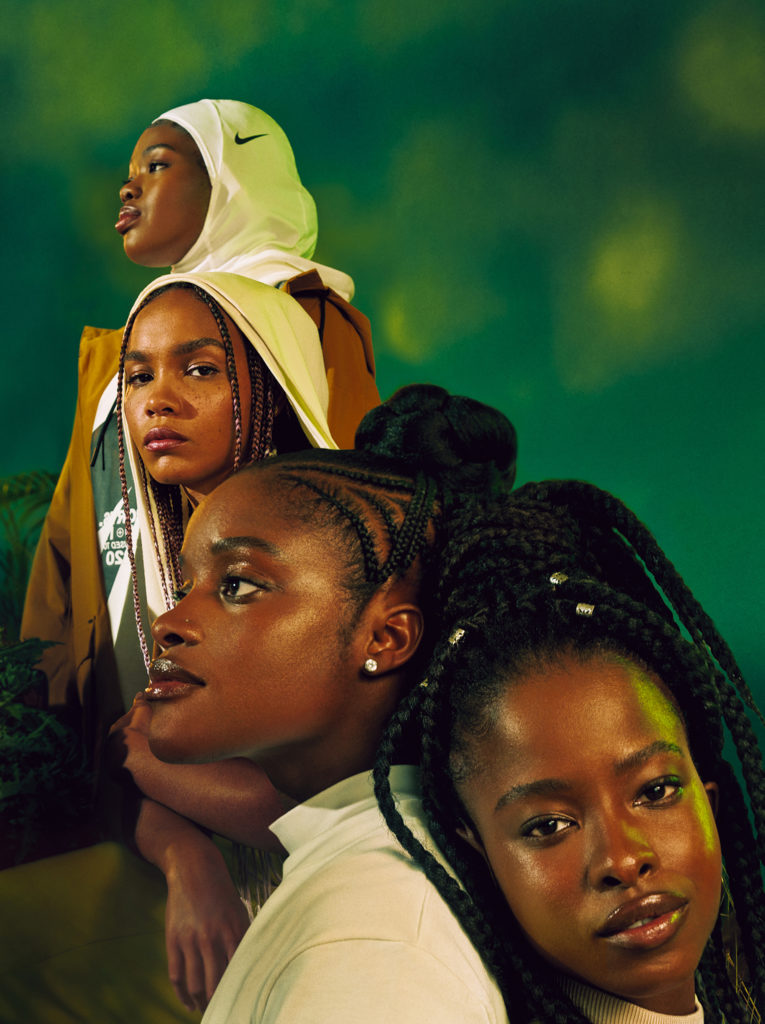
Courtesy the arist
Joshua Kissi
Antwaun Sargent: How does New York inform your practice as an image maker?
Joshua Kissi: Being of West African descent, in a place in the Bronx that has a lot of West Africans, people from Ghana and Nigeria and Guinea and Senegal, made me think about what this vibrancy looked like within my work. I always thought, What do color and tone look like? How do I make this photo feel like you’re really in Little Senegal, or on the west side of the Bronx?
Sargent: You see the multiplicity in Blackness in your images. There are differences in the way that skin color needs to be shot from neighborhood to neighborhood to make sure that you capture the richness and the specificity of that identity.
Kissi: Yeah, absolutely.
Sargent: Our city experienced this pandemic like no other at the beginning, and then we went into racial protest. You and Micaiah decided to launch See In Black.
Kissi: We were just thinking, like, Will we be able to live the same type of lives that we were living before? We knew that we weren’t the type of photographers to necessarily go out and photograph protests. That’s really an emotional thing. We love and support the people who do. But, what else can we do that isn’t necessarily on the front lines but is on the front lines? It isn’t necessarily just about a trend. It’s about, How do we solidify our perspective when it comes to image makers who are Black?
Everybody put their head down and just got to work. Getting the photographers together. Trying to organize, getting logos and websites and photos. We were really in it. But we didn’t feel like it was work because we knew the work needed to be done. And we were like, Man, we need to do something. We need to say something.
Sargent: How did you select the photographers?
Kissi: We know a lot of photographers in New York and LA, but there are so many multitudes and layers of Blackness. So it was important to have as much representation as possible within the Black community. We wanted other photographers to be like, “My personal work may not be in there. But I see my lens, I see my understanding, I see my practice.” The main point was if you see your work within this selection, the job is done. You could continue to add on to that narrative. You can continue to shape that story.
Joshua Kissi is a Ghanaian American photographer and creative director based in New York.

Courtesy the artist
Micaiah Carter
Sargent: Why did you and Joshua start See In Black?
Micaiah Carter: We wanted to have a response. As Black photographers, how can we give back to our own communities, not only based in New York but across the country? We wanted to have a plethora of people that we could reach out to for the first round of what See In Black was, and to raise money and help people in need.
Sargent: One of the first actions was a print sale—and they weren’t necessarily all images of activism. It really was about a real deep look at Black life. Why was that important to you?
Carter: Black trauma is something that is expected. There always has to be some type of struggle. We wanted to show that’s not always the case. There are moments of happiness. There are moments of mundaneness.
Sargent: Your photography often takes moments from our rich past as Black people and remixes them in these contemporary images.
Carter: I think that’s consistent from when I first started. Even now, when I’m home, I look back at my dad’s photographs. That’s still a big inspiration for how I view photography, the family album as a whole.
Sargent: How did you develop that style?
Carter: I think it’s just my perspective on how I am as a person reflecting on other people. I am inspired by certain people. So, for example, like with Megan Thee Stallion, when I shot her, I wanted her to be in her style element. I wanted this softness that you don’t really see with her.
Sargent: What do you want the future of See In Black to be?
Carter: Almost like a boys and girls club—to have, from different pockets of America and the world, accessibility to Black photography, Black tools. Like, say there’s a Black photographer who really wants to start. They can go into See In Black, know just how they want to network, and from there build to where they want to go. It’s not an agency; it’s more like a mecca for knowledge and a mecca for community.
Sargent: And history. Right?
Carter: Yeah, and history.
Micaiah Carter is a photographer based in Brooklyn and Los Angeles.

Courtesy the artist
Florian Koenigsberger
Sargent: You grew up in the city, right?
Florian Koenigsberger: Born and raised here.
Sargent: How has being a native New Yorker informed the development of your photo practice?
Koenigsberger: Growing up here makes you unafraid of approaching strangers. I remember when I got my first camera in late middle school, early high school days, the big story for me was having a chance to walk around New York and ask questions to people that I didn’t know, and to make their pictures.
Sargent: Why did you want to use your images in service of the mission of See In Black?
Koenigsberger: Many of us were fearful that what was happening in the aftermath of Mr. Floyd’s death was going to be a moment and not a movement. How do you carry this forward? For us, it was: If you can live with this representation of Blackness in your space, and this becomes something that you interact with daily, it really fundamentally challenges the racism and bias that many people are operating with daily. The other side was we wanted the community to have work. It shouldn’t just be people who are used to buying this work that can have their ideas challenged in their space.
Sargent: This is not a traditional sort of activism. What led you to have an active role beyond sharing your image and actually organizing?
Koenigsberger: My role is operations. I work as a product marketing manager at Google in my full-time job, and my work is focused on making cameras more equitable, particularly for people with darker skin tones. I got the call from Joshua, and he was talking to me about help with finance and legal for this thing that they were going to try to put together.
It was this rare alignment, like, Oh, every skill set that I have been trained to direct toward this multibillion-dollar corporation can now be repurposed to directly serve the community. No frills. No middleman. To me, that was the greatest honor. To spend all of this time learning all of these skills and to finally be able to bring them back into the community in a way that really directly and immediately serves its needs was incredible. And there was never a question for me that that wasn’t the thing to immediately dive all the way into.
Florian Koenigsberger is a photographer and storyteller living and working in New York.

Courtesy the artist
Texas Isaiah
Sargent: How did New York help you develop as an image maker?
Texas Isaiah: My first experience of community was being involved in nightlife. It taught me so much about the different ways we can take care of each other within the work that we want to do. When we were curating parties, like Alien or like Roxy Cottontail or like Good Peoples with Katie Longmyer, at least the crew that I was with, we’d come together and just ask, like, “Who are the folk that need support right now? Maybe we can hire them for the door.”
Sargent: One of the things that emerges in your work is this mosaic of young creative New York. Why was this communal portrait making important?
Texas Isaiah: Everyone contributes to a space in some way. You have the door person. You have the host. The DJ. The bartender. The person who cleans up at the end of the night. I took that idea and extended that to the everyday. I want to photograph everybody that will allow me to photograph them. And that felt important to how I was establishing an archive. Everyone is valuable. Everyone deserves a visual space.
Sargent: Why was it important for you to show up in the way that you did by joining See In Black and offering to the community your images?
Texas Isaiah: It was a way to give back. I’m not a big protester. Not everyone can be a part of a protest for five hours. So, it was just a way to remind people that they do have access to artwork during this time. I’ve known Joshua for a while now, and I trusted that Joshua would hold this space, along with Micaiah. It really felt important to also be a part of something that was established by Black people and for Black people.
Sargent: Have your ideas about activism changed?
Texas Isaiah: Activism for me is an everyday thing. It’s how I show up for my partner and how I treat my friends. I think See In Black is part of that, showing up for community and showing up for each other, even if not all of us are familiar with one another. We’re coming together and just trying to figure out how we can make our work more accessible to the community, and then also how we can raise funds and donate them to a plethora of Black organizations and collectives.
Sargent: Do you think of your archive making as a form of activism?
Texas Isaiah: I do. I’m just trying to turn away from these traditional structures of how people believe photography should be valued, and what it means to be photographed, and what it means to step into that space, and how it can be a space for everyone, every single person. It doesn’t matter if you are a janitor or if you are a gardener. You are still contributing to this world, and you deserve that space.
Texas Isaiah is a visual narrator based in New York, Los Angeles, and Oakland, California.
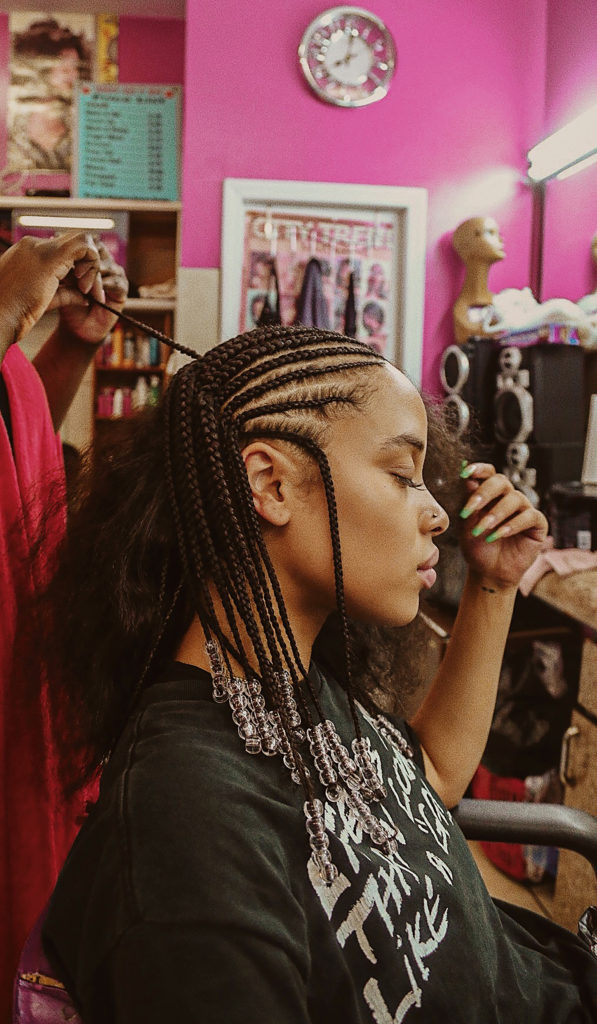
Courtesy the artist
Kreshonna Keane
Sargent: How has New York informed your work?
Kreshonna Keane: A lot of people strive to move to New York because it seems like the greatest place on earth. I think, being from here, I started to hate it and resent it. Then, moving to Atlanta and coming back, I grew a larger appreciation for New York and, more specifically, for the Bronx, which is where I was born and raised.
Sargent: What are you trying to capture about the Bronx in your images?
Keane: Originally, it started out as the life and culture. I was shooting our local restaurants, my friends in front of them, and things like that. Then I kind of wanted to start a deeper meaning, maybe by shooting the people who own these places and things like that. The part of the Bronx that I live in, the culture there, a lot of the things that we focus on are, like, food and the mom and-pop shops that are owned there. It’s heavily Caribbean-based and Caribbean-owned.
But then it kind of grew into something larger for me. I took these overlooked places, like New York City public housing. We see these project buildings every day when we walk past, and they have these negative connotations attached to them. I tried to turn it into something more beautiful by giving it an editorial spin and putting a model that you wouldn’t see there.
Sargent: When you joined See In Black, why did you feel like your photography could be used in a way to help the city?
Keane: I was actually shocked that I was asked to join it. Looking at the list, I was like, Wow, I don’t really see my work as comparable to all the other artists up there. But I realized that I should be a part of this, that maybe my work could be something for people. It felt good to be part of a larger collective and to make a difference, and I knew the impact that we could make.
Sargent: The brilliant thing about what you did with See In Black was to share images of the breadth and depth of Black life. Why is it important to you that the Bronx is a character in your images?
Keane: Because it’s so overlooked. There’s always this talk about boroughs. Everybody always says, “Oh, my borough is the best—the Bronx is the best,” or “Brooklyn is the best,” or “Queens is the best.” Ever since I was younger, I always used to hate it. I would hate being from the Bronx. I would hate what I saw when I walked around the Bronx. I was experiencing things walking around the Bronx. It’s always been a place to be feared, and a place to be looked down on, and a place to be frowned upon when you tell people you’re from there. So it’s always been important to me to show that there’s beauty here; regardless of the struggle or not, there’s beauty in it.
Sargent: And with your camera, you’re showing it.
Keane: Exactly.
Kreshonna Keane is a photographer, creative director, and visual artist based in New York.
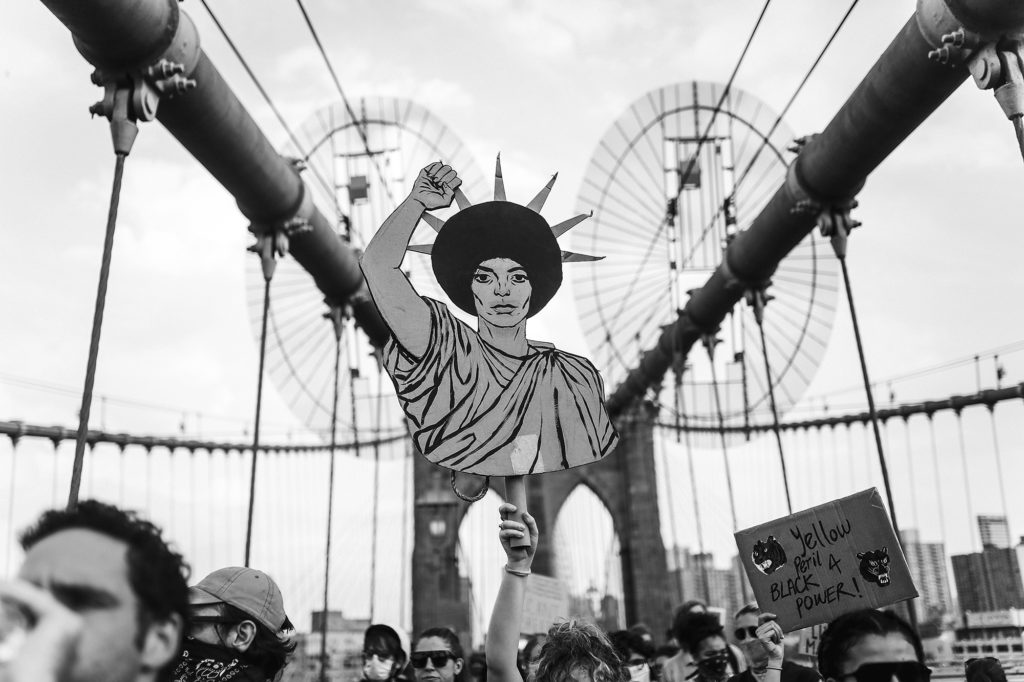
Courtesy the artist
Flo Ngala
Sargent: How has New York shaped you as an artist?
Flo Ngala: It’s pretty much the whole reason why I think I’m able to approach the world of photography the way I do. From a young age, I’ve always been outgoing and talkative and excited about life. It’s a vigor that I acquired growing up. I think it would be very different if I was raised in the country or another city.
Sargent: Early on, your practice was largely self-portraits at home in Harlem, of you on the roof. How did you frame those images in relationship to the city’s landscape?
Ngala: People call New York a concrete jungle. The city itself builds up more than we build across. So just even being on a roof was something I was used to, being on a fire escape was something I was used to in the homes that my parents and my family lived in.
Sargent: When See In Black was formed, what did it mean to you to use your images in a way that gave back to the community?
Ngala: I remember being in high school and being a fan of what Josh was doing with Street Etiquette. I loved that so much because it was this awesome representation of the city and fashion photography and Black men. So, I was honored to be included. To be able to show an image that a lot of people felt was powerful, that a lot of people felt moved to purchase, something that was taken in my home literally a couple of blocks from my house, to me, that’s a representation of the community at a very important moment in time.
Sargent: Unlike a lot of other photographers who did See In Black, you actually went out there and documented the protests. And we saw each other a couple of times.
Ngala: Well, at my core, I am a street photographer. And I’m grateful that even though I’ve done other work as the years have gone on, that muscle is very sixth-sense, it’s very muscle-memory, it’s very natural to pop back into the action of it and just be in the moment. You communicate with people. And I love that I can hop back into that kind of work very naturally. It’s really a blessing.
To be able to see my work, not just on my social media or on my website, but to see it in people’s homes and to have people hit me up, and say, “I want to buy that print”—I’m like, Wow, that’s so cool. That moment spoke to you enough that you wanted to bring it home with you and have it forever.
Flo Ngala is a New York–based portrait photographer and photojournalist from Harlem.
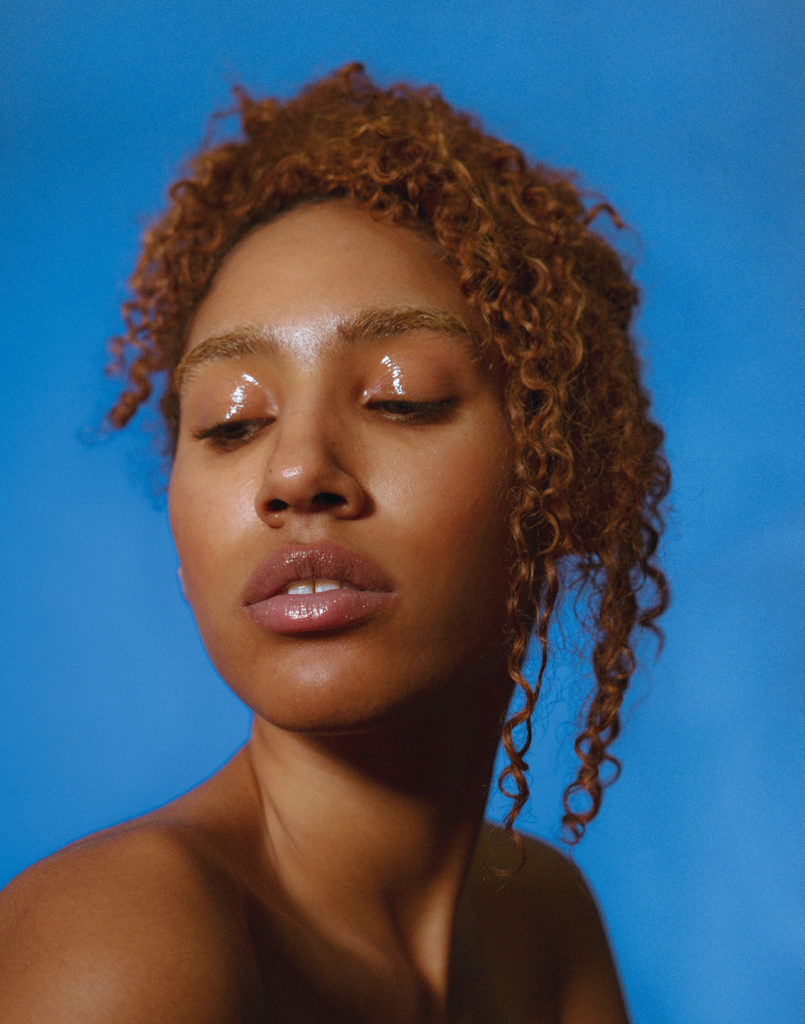
Courtesy the artist
Mahaneela
Sargent: How does New York inform your way of seeing?
Mahaneela: I should start with how much identity informs my work and my practice, being someone of multiethnic backgrounds. I’m from Jamaica; I’m from West Africa; I’m from India, born and raised in London. My parents are from East Africa, even though they’re Indian. I am used to the mix and blend of cultures. So, for me, that’s always been a really big part of how I see things, and being in New York is a gold mine of cultural richness.
Sargent: Has your portrait practice changed from England to New York?
Mahaneela: Yes, it has, actually. In England a lot of my photography was of people I knew, people within my community; in New York it’s shifted. I’m creating a new home for myself—and so I have to go outside of myself, to kind of reach out to people and start these conversations and connections, rather than them already being there.
I’ve been coming back and forth to New York for years, like since 2014. That’s actually when I met Josh. He showed me around New York. We’d never met before; we just knew each other on Instagram. He was the one who took me around and gave me my first insight into the city.
The subject that I shot for See In Black, she is somebody I met in New York. I met her randomly, at a party. Which I felt was such a New York experience. That was the reason I feel I did that image. Because really, that image reminds me of how things come full circle, and how I just met this girl at a random party, I didn’t know anyone, we started talking, and then maintained that relationship, and ended up doing this shoot, which was very spontaneous. New York gives me that confidence.
Sargent: Why was it important to use your images in a social justice movement?
Mahaneela: I was able to feel like I was actually being an agent for change in a way that was acceptable to me. That period of time between March and June was an extremely scary and unstable time for New Yorkers, especially being that there was such a high concentration of COVID-19. It felt like a moment of powerlessness, coupled with the murder of George Floyd. And it also felt like a time in which we could kind of take matters into our own hands.
See In Black was a way of making a change in a positive way. We are raising money for the Black Youth Empowerment Project, the National Black Justice Coalition, the Black Futures Lab, and also the Bail Project. And we are giving a broad look into what Black photography and what the canon of photography are now. Even just seeing all of our prints there, seeing the diversity of composition and people and characters and subjects that exist within the work, was eye opening. We are not one homogeneous thing, and yet we still come together for these causes that affect all of us and all our families and all of the communities that we belong to.
We saw close to half a million in sales for See In Black. The demand and the value are there. It goes to show the value of this work and our contributions to the world.
Mahaneela is a multidisciplinary artist and DJ from London.
This article originally appeared in Aperture, issue 242, “New York,” under the title “Seeing In Black.”










